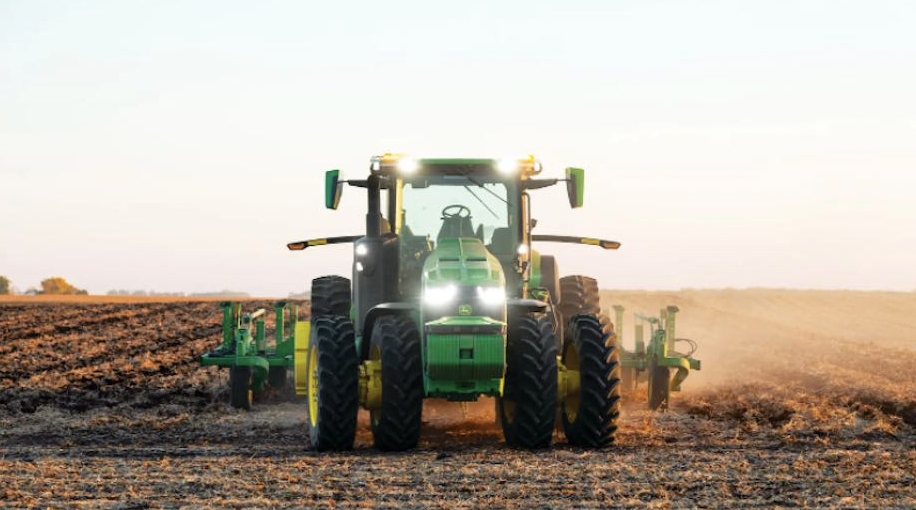John Deere has made another acquisition related to the development of autonomous tractors. John Deere has acquired Light, a Redwood City, California-based company that specializes in depth sensing and camera perception for autonomous vehicles. Financial terms of the deal are unknown.
Light was founded in 2013 and has raised $185.7 million, according to Crunchbase. According to Crunchbase, its latest round of funding, a $121 Series D led by Softbank Vision Fund, took place in July 2018.
John Deere will integrate the Light platform, Clarity , into its autonomous tractors. John Deere appears to be taking a vision-only approach to autonomy. Its new 8R autonomous tractor is equipped with six pairs of stereo cameras and does not use LiDAR. While LiDAR has become commonplace for autonomous vehicles operating on the road, it appears to be less relevant for navigating a less busy farm. John Deere also said that the vision-based approach is better suited to detecting and monitoring weeds in real time.
Tesla uses the oft-criticized vision-only approach for its Autopilot Level 2 driving system. But on its Web site, Light says that “human vision is the key to enabling cars to navigate the environment accurately and safely.” Willie Pell, vice president of autonomy and new ventures at Blue River Technology, a John Deere company, that LiDAR is not a good sensor option for autonomous tractors. The Light acquisition confirms this.
“There were many reasons for not using LiDAR, but the main one was dust. LiDARs don’t work that well in dust,” Pell said.
“Another reason is that LiDARs have moving parts, and we work in very harsh environments. And the other reason is that we’re really just not moving that fast. We’re going 10 miles an hour, and we don’t need to see 90 meters ahead of us. We need to see 20 meters ahead. So we settled on stereo cameras.”
Light says his camera-based perception platform can see three-dimensional structures from 10 cm to 1,000 meters away and capture 95 million points per second. He uses signal processing to create a three-dimensional image of the environment at a rate of 30 times per second.
Here’s how Light describes its technology: “Light’s multi-camera depth perception platform enhances existing stereo imaging systems by using additional cameras, new calibration, and unique signal processing to provide unprecedented depth quality across the entire camera field of view. With time-coordinated full-field-of-view depth, which is essentially unified with the reference camera image at the pixel level, perceptual engineers are freed from the existing limitations of depth range, frequency and even sensor matching errors.”
John Deere steps toward autonomous tractors
“Finding the Light” is John Deere’s latest move. In April 2022, it formed a joint venture with GUSS Automation , a pioneer of semi-autonomous sprayers for orchards and vineyards from Kingsburg, Calif. Through the joint venture, Deere will help GUSS further partner with Deere’s sales channel, and GUSS will continue its innovation and product development to better serve customers, Davison said.
GUSS was founded in 2018 and has about 35 full-time employees. GUSS will retain its employees, brand name and trademark and will continue to operate in its current location. GUSS employees, customers and business partners should notice small changes in day-to-day operations associated with the joint venture.
In August 2021, John Deere acquired Bear Flag Robotics for $250 million . Bear Flag Robotics is a California-based developer of autonomous driving technology for tractors. Bear Flag Robotics, founded in 2017, is upgrading its autonomous stack for existing tractors. It uses cameras, LiDAR and radar technology to duplicate 360-degree situational awareness on the farm. The tractors can either be purchased or leased under a robotics-as-a-service (RaaS) agreement, which charges per acre.
John Deere’s quest for autonomy began with its $305 million acquisition of Blue River Technology in 2017.



